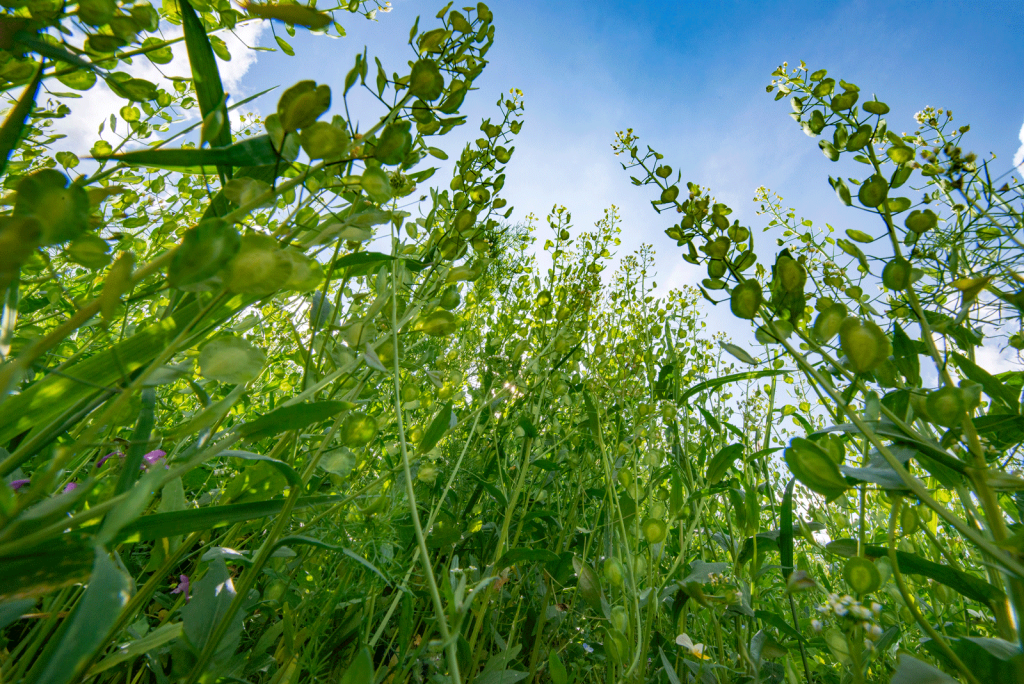
Weed management is a crucial component of a successful Conservation Reserve Program (CRP) project. Without proper control, invasive and non-native weeds can outcompete native grasses and wildflowers, reducing biodiversity, inhibiting habitat quality, and jeopardizing compliance with CRP contracts.
To establish and maintain a healthy, thriving CRP field, landowners must use strategic and sustainable weed management techniques. In this guide, we’ll explore the best practices for controlling weeds while promoting the growth of native plants and improving wildlife habitat quality.
Why Weed Management Matters in CRP Fields
Weeds are more than just an eyesore—they can significantly impact the success of a CRP project. Proper weed control ensures:
Better Establishment of Native Plants – Reducing weed competition allows CRP-approved native grasses and forbs to develop strong root systems.
Improved Wildlife Habitat – Native plants provide better food, shelter, and nesting areas for pollinators, birds, and other wildlife.
Compliance with CRP Requirements – State and federal CRP programs have strict weed control guidelines that landowners must follow.
Long-Term Success – Effective early weed control reduces future maintenance efforts and costs.
Best Practices for Controlling Weeds in CRP Fields
Use Proper Site Preparation Before Planting
Effective weed management begins before seeding native plants. Site preparation can reduce the initial weed seed bank, giving native species a competitive advantage.
Herbicide Application – Apply a non-selective herbicide (such as glyphosate) before planting to eliminate aggressive weeds and non-native grasses.
Tillage (If Necessary) – In some cases, light tillage can help expose weed seeds and deplete the soil’s weed seed bank before planting native species.
Cover Crops – Using a temporary cover crop, like oats or winter wheat, can suppress weeds before transitioning to native seed.
Pro Tip: Site preparation is essential for ensuring high germination rates of native grasses and wildflowers.
Implement Timely Mowing to Reduce Weed Competition
Mowing is one of the most effective ways to control weeds in the first 1-2 years after planting. It prevents fast-growing weeds from choking out native seedlings while allowing native plants to establish.
First Growing Season:
- Mow weeds when they reach 18-32 inches tall, setting the mower to 10-12 inches to avoid damaging native seedlings.
- Mow multiple times throughout the first year to suppress weed seed production.
Second Growing Season:
- Spot-mow problem areas where weeds are dominant.
- Avoid mowing during the active growing season of native plants.
Long-Term Maintenance:
- Once native plants are well-established, mowing should be minimal, used only for targeted weed control.
Use Selective Herbicide Applications
While native grasses and wildflowers are tolerant of some weed competition, aggressive invasive species may require targeted herbicide applications.
Spot Spraying – Apply herbicides directly to problem weeds like thistles, Johnson grass, or Canada goldenrod without harming desirable native species.
Selective Herbicides – Choose herbicides that target specific weeds while leaving native species intact.
Early Treatment – Treat weeds early in the season before they flower and produce seeds.
Important: Always follow CRP regulations when using herbicides, as some programs have restrictions on chemical applications.
Utilize Prescribed Burning for Long-Term Weed Control
Prescribed burns mimic natural fire cycles, removing dead plant material, controlling weeds, and stimulating native plant growth.
Best Time for Prescribed Burns:
- Early to mid- Spring – Controls cool-season weeds while allowing warm-season grasses to emerge.
- Early Fall – Reduces invasive species and prepares the site for winter dormancy.
Benefits of Controlled Burns:
- Eliminates woody encroachment.
- Releases nutrients back into the soil.
- Encourages strong regrowth of native plants.
Note: Always consult local fire officials and CRP program coordinators before conducting a prescribed burn.
Encourage Natural Competition with a Diverse Seed Mix
One of the best long-term weed control strategies is planting a diverse mix of native grasses and forbs that outcompete weeds naturally.
Dense Native Grass Stands – Species like Big Bluestem, Switchgrass, and Indiangrass develop deep root systems that crowd out unwanted weeds.
Wildflowers for Pollinators – Adding native wildflowers like Black-Eyed Susan, Milkweed, and Purple Coneflower promotes biodiversity and reduces weed spread.
Fast-Germinating Native Species – Including quick-establishing plants fills bare soil before weeds can take over.
At All Native Seed, we provide regionally adapted CRP seed mixes that give native species the competitive edge over weeds.
Monitor and Adapt Weed Control Strategies
Weed management isn’t a one-time effort—it requires ongoing monitoring and adjustments to ensure native plants remain dominant.
Regular Inspections – Walk your CRP fields to identify problem weeds before they spread.
Adjust Strategies as Needed – If one method isn’t working, try a combination of mowing, herbicides, or prescribed burning.
Stay CRP Compliant – Keep records of weed control measures to ensure compliance with USDA program requirements.
Partner with All Native Seed for a Thriving CRP Field
At All Native Seed, we understand the challenges of weed control in CRP projects. That’s why we offer:
High-Quality, Certified Native Grass & Wildflower Seed – Tested for purity and compliance with CRP requirements.
Expert Guidance on Weed Control Strategies – Get recommendations tailored to your region and project goals.
Custom CRP Seed Mixes – Designed to establish strong native plant communities that naturally suppress weeds.
With over 400,000 acres of successful CRP plantings, we have the expertise to help you create a resilient, weed-resistant native habitat.
Get Started Today
Effective weed management is key to a thriving CRP field. By using proper site preparation, mowing schedules, targeted herbicide applications, prescribed burning, and diverse native seed mixes, you can control weeds while promoting native plant growth.
Ready to establish a healthy, weed-resistant CRP field? Contact All Native Seed today for expert advice and top-qu
What’s Next for Native Seed Technology?
The future of native seed technology is brighter than ever, with ongoing research and innovation leading to higher germination rates, stronger plant resilience, and more effective conservation strategies. Here’s what we can expect in the near future:
AI & Data-Driven Seed Selection – Artificial intelligence will play a larger role in analyzing soil and climate data to recommend the best native seed combinations for specific locations.
Eco-Friendly Seed Treatments – More biodegradable coatings and organic seed treatments to reduce environmental impact.
Genetic Research for Native Plant Adaptation – Continued advancements in breeding techniques to strengthen native plant survival rates without altering their natural biodiversity.
At All Native Seed, we stay ahead of these innovations to ensure that landowners, farmers, and conservationists have access to the latest advancements in native seed technology.
Partner with All Native Seed for Future-Ready Conservation
With over 400,000 acres of successful CRP plantings, All Native Seed is dedicated to providing the highest-quality native seed and the most advanced seed technologies available.
- High-Germ, Certified Native Seeds
- Proprietary BOOST Treatment for Enhanced Growth
- Custom CRP Seed Mixes Tailored to Your Region
- Expert Guidance for Conservation & Restoration Projects
The future of conservation is here—and it starts with high-quality native seed.
Contact All Native Seed today to learn how the latest advancements in native seed technology can help you create a more resilient, thriving CRP project!
